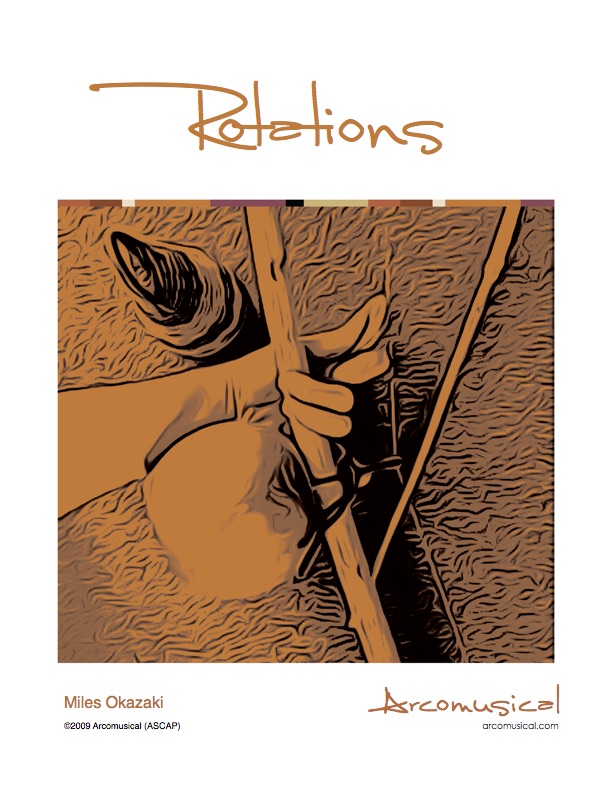$40.00 – $45.00
Rotations
- Miles Okazaki (b.1974)
- Sextet
- 2009
The berimbau is the simplest of instruments in its construction: a piece of wire strung across a piece of wood. It has ancient roots, and lays in the boundary between percussive and melodic instruments. As a percussive instrument, its lineage is traced to African ritual music, and undoubtedly to some of the first music made by humans. It is also a monochord (single string), which is the same instrument used in Ancient Greece and China to explore the connections between properties of sound and the organization of philosophy, proportion, and the Cosmos. “Rotations” is a piece that tries to imagine this boundary area, where elements of rhythm give birth to melody, and in turn give birth to harmony. The berimbau is an instrument that allows us to step out of historical time, and explore the nature of sound in a very pure sense, with each musician controlling a single element. The combination of elements in time is infinite in its variety, but incredibly simple in theory. The connection between number and sound has a long history in Music and Mysticism. The berimbau is a binary instrument, in that is has two pitches, high and low. Here there are six instruments in symmetrical tuning, resulting a palette of 12 elements, identical to the 12 pitches of modern Western music. The rhythmic pattern is a rotating figure that, if it is written in a circle of twelve points, could be seen as either a clave (in 12/8 time) or as a pentatonic scale (on a chromatic wheel). In the beginning, we hear only a few elements, but they are slowly revealed as the patterns rotate around one another, like the planets appearing and disappearing on the horizon. Twelve is made of 3 and 4, and the addition of 5 gives birth to the triad in Music (the harmonic series), as well in Geometry (the triangle). Thus, the progression through these numbers is seen as a kind of imagined return to a kind of Ancient Holistic thinking, where Music, Science, and Art are linked by the same basic principles. How did music sound in Ancient times, in various parts of the World? There is no way for us to know. “Rotations” is an imagined trip to another time, either into the past, when humans were first experimenting with the production of music on external instruments, or into the future, where humans have exhausted the potential of complicated machines and technology, and yearn for a return to the basic principles of making sound. – Miles Okazaki, Brooklyn, New York, 2009
 Loading...
Loading...
Related products
-
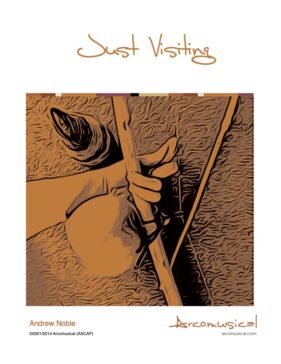
Just Visiting
- Andrew Noble (b.1978)
- Solo, Sextet, Electronic Media
- 2001
-
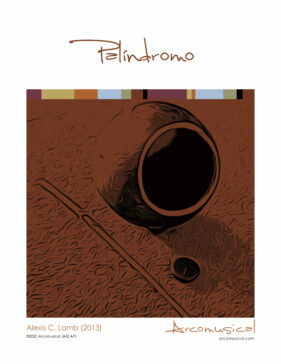
Palíndromo
- Alexis C. Lamb (b.1993)
- Trio
- 2013
-
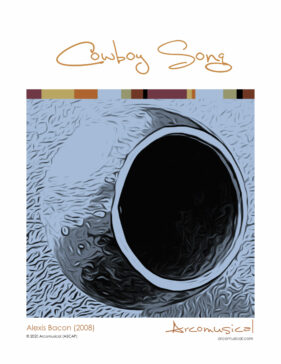
Cowboy Song
- Alexis Bacon (b.1975)
- Solo, Electronic Media
- 2008
-
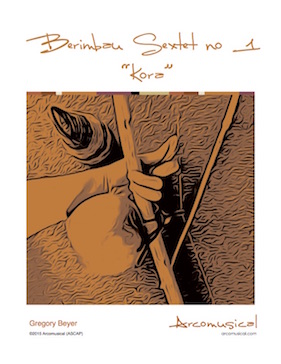
Kora
- Gregory Beyer (b.1973)
- Sextet
- 2015

